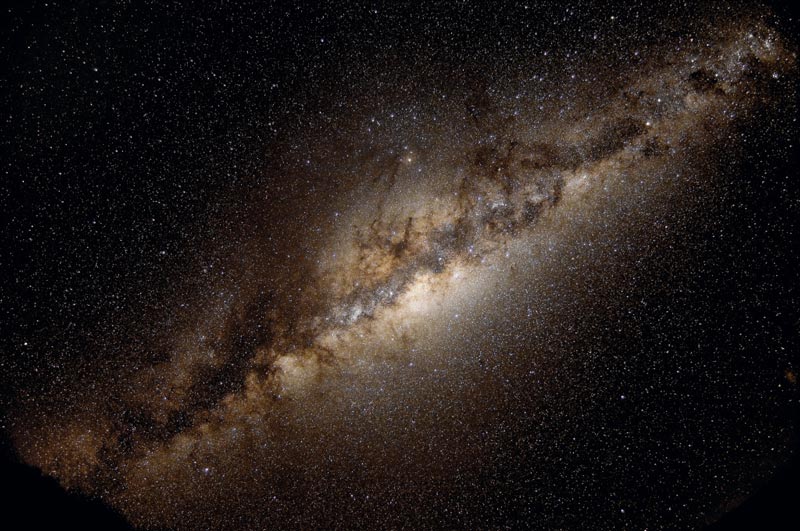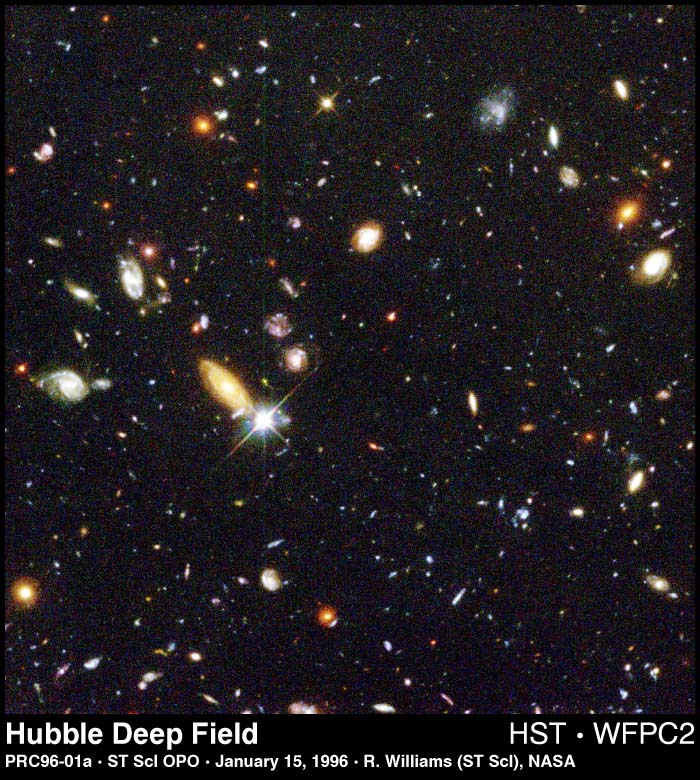Happy 2017, everyone! To kick off the new year, I thought I'd share some fascinating (to me, anyway) year-end 2016 astronomy news.
 |
| Dry as a bone? |
Mars is super-dry, right? Well, yes and no. The surface certainly appears to be, but, as
Phys.org reports,"
Mars ice deposit holds as much water as Lake Superior."
That should make eventual colonization easier. (Hey, the year is young. Permit me a bit of optimism.)
 |
| What lurks behind? |
You'd think entire galactic clusters would be difficult to overlook. In general you'd be right. Even so,
Cosmos reports that "
Galactic supercluster found hiding behind Milky Way." (One of the many pluses of the new astronomical sub-specialty of gravitational observation is: gravitational waves pass through pesky obstacles like dust clouds and galaxies -- though that's not how
this lurker was finally detected.)
 |
| A tiny part of the sky ... |
And what's bigger than galactic super-clusters? How about: the universe itself? Which brings us to the mystery of the so-called "dark energy," invoked to explain the universe expanding at ever-faster rates.
Dark energy is an explanation if there is something to explain. What if there isn't? Consider that there
might have been a serious measurement error. So, anyway, suggests an article in
Physics World: "
Supernovae analysis finds scant evidence for dark energy." The takeaway:
The difference between the trio's study and previous analyses is how
variations in supernovae light are dealt with. While all type 1a
supernovae are nearly identical, astrophysicists know that there are
important differences that must be accounted for. Sarkar and colleagues
argue that the statistical techniques adopted for previous studies are
too simple and not appropriate for the growing set of observational
data.
One study doesn't disprove accelerating expansion and the dark-energy concept ... but follow-up studies are surely in order.
This being my first post of 2017, I think it's appropriate to end with, from
Sky and Telescope, "
Top Astronomy News Stories of 2016." Because astronomy had a heck of a year!
 |
| Wave bye-bye ... |
And my vote for 2016's most significant astronomical event? Thanks for asking! It's that LIGO -- the Laser Interferometer Gravitational-Wave Observatory -- made the first detections of long-hypothesized gravitational waves. (I first commented upon the detection way back in February, in "
Leggo my LIGO.") LIGO has twice now detected, as conceptualized in the nearby image, two black holes as they in-spiraled and, ultimately, merged. Of course,
merged sounds peaceful. Not! The event converted, in a trice, roughly three times the mass of our sun into energy. That's a
lot of energy!
(I chose the LIGO milestone for its intrinsic coolness, and
not because what precipitates everything in my 2016 novel
Dark Secret is a more advanced observatory detecting gravitational waves that forewarn of two in-spiraling neutron stars similarly about to collide -- and unleash havoc. That's merely a grand coincidence :-) )




































No comments:
Post a Comment